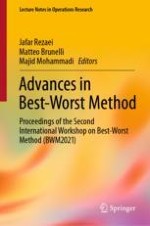This book presents recent advances in the theory and application of the Best-Worst Method (BWM). It includes selected papers from the Second International Workshop on Best-Worst Method (BWM2021), held in Delft, The Netherlands from 10-11 June, 2021, and provides valuable insights on why and how to use BWM in a diverse range of applications including health, energy, supply chain management, and engineering. The book highlights the use of BWM in different settings including single decision-making vs group decision-making, and complete information vs incomplete and uncertain situations. The papers gathered here will benefit academics and practitioners who are involved in multi-criteria decision-making and decision analysis.
